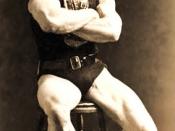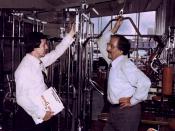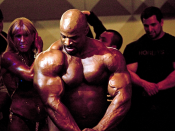Among the obscure sports to choose from, one that the public have the least amount of knowledge about is the sport of bodybuilding. That is the competition with the guys in the little Speedo and enough instant bronze tan lotion to kill a horse. But Speedos and bronze tanner aside, the men and women who participate in this sport are in peak physical condition, training year round to maintain a physique that ancient Greeks attributed only to the gods. When it comes down to it, bodybuilding has a lot of similarities to other more recognized sports. They require hard work, much practice, and a relentless dedication to their sport. Bodybuilding certainly covers all of these areas and is a truly competitive sport.
Bodybuilding is defined as the process of developing musculature of the body through specific types of diet and physical exercise, such as weightlifting, for competitive exhibition. From 1890 to 1929 was the first time period when bodybuilding became a commercially recognized sport and gained great popularity from the general public.
The first famous bodybuilder was Eugen Sandow, who became known as "The Father of Modern Bodybuilding." On March 28th 1891, the first World Bodybuilding Championship was held in London. Five years later, in 1896, the first European Bodybuilding Championship took place. This was also the year in which the first modern Olympic Games took place in Athens with weightlifting as one of the events.
The 1940's to the 1970's were known as the "Golden Age of Bodybuilding." Training techniques were advancing along with the equipment used. During this period, bodybuilding enjoyed more commercial success. Movies such as Hercules, Tarzan, and Superman featured bodybuilders-turned-actors. The manufacturing of exercise equipment was at an all-time high, and pros were endorsing specialized nutrition supplements that were specifically geared toward the bodybuilding community.



Interesting
Just to show, Learn something new everyday. Thanks
2 out of 2 people found this comment useful.